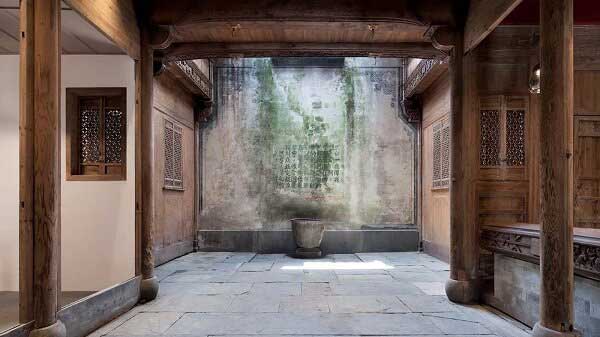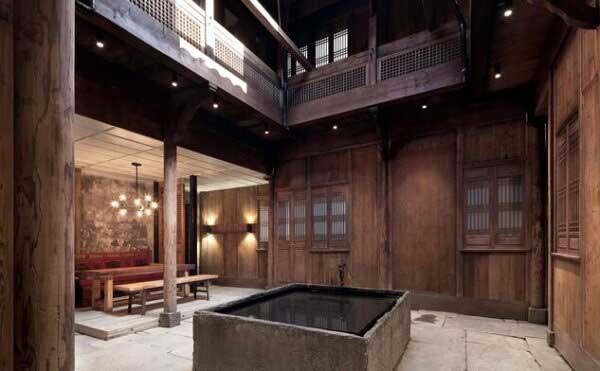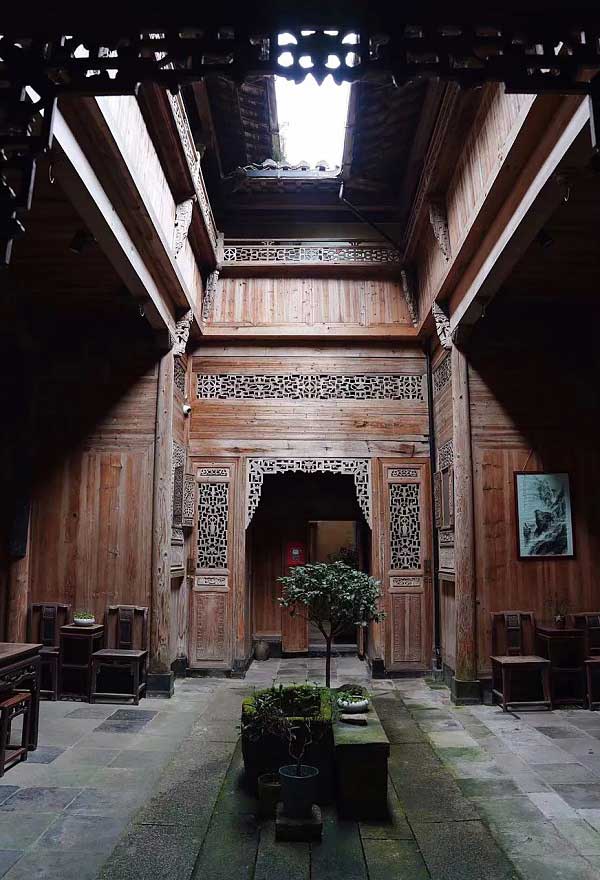July 2023
Long before electricity, air conditioning and heating were invented, architects and designers in the past had to adapt to the challenges of the planet. As modern man tries to find a way to reduce carbon emissions, the ancients have much to teach us.

Image credit: Wuyuan Skywells Hotel
In China, more and more modern buildings are planned around ancient design features known as 'skywells' - and they do so not only because the design significantly cools a building's interior, but also because it reduces carbon emissions by reducing the need for air conditioning.
In the humid south of the country, a skywell has been in use since the Ming Dynasty in the 14th century. It is actually a square or rectangular courtyard in the middle of the floor plan with a stone wall on one side. Above it hang the classical dou gong, or beams and brackets. These shade the ground and direct rainwater to a central basin.
When the wind blows across the roof of a sky house, it is often colder and therefore heavier than the wind chill inside. The wind is funneled downward, especially through the wall, to the interior which then pushes the warmer still air higher and out of the opening.
But even when it is not windy, openings such as skylights, chimneys or flues provide circulation. As warm air rises through the air duct, it pulls in air from the other rooms.

In a bid to help keep modern buildings cool, architects are drawing inspiration from skywells (Credit: Wuyuan Skywells Hotel)
Traditional Chinese designs have a basin of water replenished by rain in the center of the air duct. As the water evaporates, it cools the surrounding air before rising and creating the aforementioned circulation.
People living in hot environments around the world have been using these principles to cool their homes for thousands of years, as it can reduce indoor temperatures by 4.3°C.
In Persia, for example, "wind towers" acted as chimneys of cold air that brought desert wind down into a house or even an underground cold chamber that created a constant movement of cold air in and warm air out; a design that has been replicated in Andalusia, Spain.
Recently, the BBC reported on great interest in the revival of traditional Chinese architectural principles, and the skywell is one that is getting a lot of attention because of its ability to reduce the use of air conditioning, in line with a recent government initiative for greener buildings.

Hot air inside the house rises up and escapes through the skywell opening, which acts like a chimney (Credit: Ru Ling)
Moreover, the skywell has a real aesthetic beauty that combined with the pleasant climate creates the perfect place to eat, read or spend time with family. It is a buffer zone where you can enjoy the benefits of being outside without being bothered by heat, sunburn or insects.
However, this principle is not limited to family homes. The National Heavy Vehicle Engineering Technology Research Center in the eastern Chinese city of Jinan has an 18-story tower block with a huge skywell in the middle. The bathrooms, meeting rooms and elevators are all located on interior walls that overlook the skywell, providing better ventilation and temperature control.
Reference(s).. www.bbc.com